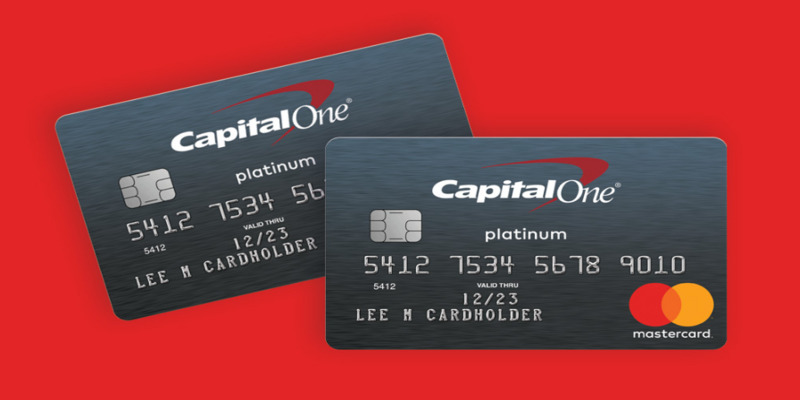Simplifying Real Estate: A Deep Dive Into How a 1031 Exchange Works
Dec 18, 2023 By Triston Martin
In the complex landscape of real estate transactions, one tool stands out for its ability to provide significant financial benefits: the 1031 exchange. This mechanism, codified in Section 1031 of the U.S. Internal Revenue Code, allows investors to defer capital gains taxes on the exchange of certain types of property. This primer aims to deconstruct the often intimidating realm of 1031 exchanges, providing a straightforward and comprehensive understanding of its workings, benefits, and critical considerations.
How Does a 1031 Exchange Work?
A 1031 exchange, also known as a like-kind exchange, begins when an investor sells a property. Instead of taking the profits, the investor employs a qualified intermediary to hold the funds. Within 45 days of the sale, the investor identifies a like-kind property or properties that they intend to acquire, giving this information to the intermediary. The investor then has up to 180 days to close on the new property using the funds held by the intermediary. If all these steps are followed according to IRS guidelines, the investor can defer capital gains tax that would normally be incurred from the sale.
Process of a 1031 Exchange: From Sale to Purchase:
- Sell the Property: The process of a 1031 exchange begins with the sale of the original property. This can be any type of real estate, including commercial or residential properties.
- Employ a Qualified Intermediary: Once the property is sold, an investor must find a qualified intermediary to hold onto their funds. This third party cannot be someone who has previously had a business relationship with the investor, such as a real estate agent or attorney.
- Identify Replacement Properties: Within 45 days of the sale, the investor must identify one or more replacement properties that they intend to purchase using the funds held by the intermediary. It's important to note that there are specific guidelines on how many properties can be identified and their total value.
- Close on the Replacement Property: Once the replacement property or properties have been identified, the investor has 180 days from the sale of their original property to close on the new property using the funds held by the intermediary. It's crucial to follow this timeline for the exchange to be considered valid by the IRS.
Types of 1031 Exchanges:

- Delayed Exchange: Also known as a forward exchange, this is the most common type of 1031 exchange. In a delayed exchange, the investor sells their original property before acquiring a like-kind replacement property. The proceeds from the sale are held by a qualified intermediary until they're used to purchase the replacement property.
- Simultaneous Exchange: As the name suggests, in a simultaneous exchange, the sale of the relinquished property and the acquisition of the replacement property happen simultaneously. This type of exchange requires careful coordination and same-day closings to be successful.
- Reverse Exchange: In a reverse exchange, investors acquire the replacement property before selling the relinquished property. This type of exchange can provide investors with more flexibility but can be more complex and costly to execute.
- Construction or Improvement Exchange: This type of exchange allows investors to use the proceeds from the sale of their original property to build or improve a new property instead of purchasing an existing one. This can be particularly beneficial for those looking to upgrade or diversify their real estate portfolio.
Each of these types offers unique benefits and considerations, and investors need to consult with financial and real estate professionals to determine which option is best suited to their particular needs and circumstances.
Benefits of 1031 Exchange:

A 1031 exchange offers several significant benefits to investors:
- Tax Deferrals: The primary advantage of a 1031 exchange is the ability to defer capital gains tax. Instead of paying tax on the sale of the property, the investor can reinvest the proceeds into a new property, thereby deferring the tax liability. This can result in substantial savings, especially for properties that have significantly appreciated in value.
- Wealth Accumulation: By deferring taxes, investors can use the full amount of their capital gains to invest in new properties. This can contribute to an increase in wealth over time as investors can continuously trade up to more valuable properties without losing money to taxes.
- Portfolio Diversification: A 1031 exchange provides an opportunity for investors to diversify their real estate portfolio. They can exchange one type of property for another, move from one geographical location to another, or switch from a single high-value property to multiple lower-priced properties.
- Estate Planning: A 1031 exchange can also be a valuable tool in estate planning. When an investor dies, their heirs receive a step-up in basis, which means the properties' cost basis is adjusted to the fair market value at the time of the investor's death. This can eliminate any deferred capital gains tax.
- Flexibility: The various types of 1031 exchanges offer flexibility to investors. Whether they want to sell before they buy, buy before they sell, or even construct or improve a new property, a 1031 exchange can accommodate these strategies.
Each of these benefits can enable investors to strategically navigate the real estate market, optimize their tax savings, and maximize their investment growth.
Common Misconceptions and Pitfalls:
There are several common misconceptions and potential pitfalls that investors should be aware of when it comes to 1031 exchanges:
- Misconception About 'Like-Kind': Many investors mistakenly believe that they must exchange the same type of property, like residential for residential. However, 'like-kind' refers to the nature or character of the property, not its grade or quality. Therefore, different types of investment or business properties can be exchanged.
- Violation of the 45/180 Days Rule: Failure to identify replacement properties within 45 days or close the deal within 180 days can invalidate the 1031 exchange.
- Incorrect Calculation of Capital Gains: Some investors incorrectly calculate capital gains, leading to unexpected tax liabilities. It's important to correctly account for net selling price, adjusted basis and realized gain.
- Ignoring Debt in Exchanges: Some investors overlook the fact that debt on the relinquished property must be replaced with equal or greater debt on the replacement property, or the investor must invest additional cash. Otherwise, the transaction could be partially taxable.
- Attempting to Do It Alone: Many investors underestimate the complexity of a 1031 exchange and try to execute it without professional help. However, mistakes can lead to hefty tax bills, so it's advisable to work with experienced professionals.
Understanding these potential pitfalls and misconceptions can help investors navigate a 1031 exchange more effectively and make the most of the tax-saving opportunities it offers.
Conclusion:
A 1031 exchange is a powerful tool for real estate investors looking to defer taxes and maximize their investment growth. With careful planning and the guidance of experienced professionals, investors can take advantage of this tax-saving strategy and use it to build wealth, diversify their portfolios, and plan for the future. It's essential to understand the different types of exchanges available, the benefits they offer, and the potential pitfalls to avoid. By doing so, investors can make informed decisions and execute successful 1031 exchanges that help them achieve their financial goals.
-
 Taxes Mar 16, 2024
Taxes Mar 16, 2024Simple Guide to Record the Lease Liability and Corresponding Asset
Let’s understand the complexities of recording lease liability and assets with ease. Our simple guide breaks down the process, ensuring accuracy and compliance.
-
 Know-how Dec 14, 2023
Know-how Dec 14, 2023Best Places to Retire in Idaho
Find out why Idaho is a great place for retirees! From its stunning scenery and activities to its rich culture and fascinating historical sites, learn about the best places to retire in Idaho.
-
 Banking Oct 09, 2023
Banking Oct 09, 2023Capital One VentureOne Review: Your Passport to Smart Spending and Rewarding Travels
The Capital One VentureOne Credit Card is a great option for travelers and diners. Learn how to earn and redeem points and enjoy travel and dining benefits.
-
 Banking Nov 23, 2023
Banking Nov 23, 2023Citi Travel Guide: Simplifying Your Journey with Exclusive Features
Planning a trip? Discover the ins and outs of the Citi Travel Guide and explore its fantastic features in our comprehensive guide.
